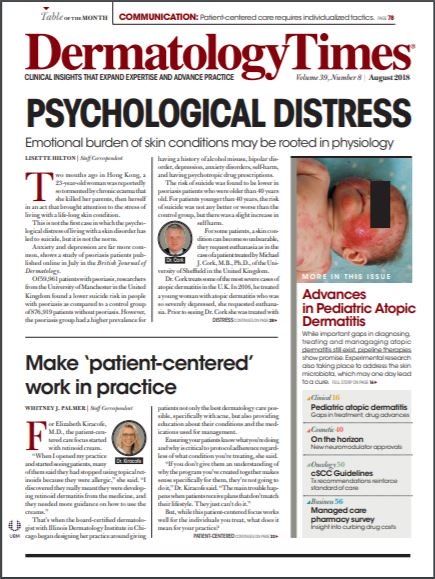- Case-Based Roundtable
- General Dermatology
- Eczema
- Chronic Hand Eczema
- Alopecia
- Aesthetics
- Vitiligo
- COVID-19
- Actinic Keratosis
- Precision Medicine and Biologics
- Rare Disease
- Wound Care
- Rosacea
- Psoriasis
- Psoriatic Arthritis
- Atopic Dermatitis
- Melasma
- NP and PA
- Skin Cancer
- Hidradenitis Suppurativa
- Drug Watch
- Pigmentary Disorders
- Acne
- Pediatric Dermatology
- Practice Management
- Prurigo Nodularis
- Buy-and-Bill
Publication
Slideshow
Dermatology Times
11 steps to improving doctor-patient communication
Author(s):
For many dermatologists, successfully treating patients means taking a more patient-centered approach to care. This table includes 11 tips from Dr. Neil Prose, Duke University Medical Center.
For many dermatologists, successfully treating patients means taking a more patient-centered approach to care. According to Neil Prose, M.D., a pediatric dermatologist with Duke University Medical Center, you can employ tactics to individualize the care you provide. “What you do cannot only focus on the conditions you’re treating, but also on how your patients feel and what their goals are,” he said. “Treating a dermatology condition isn’t a one-size-fits-all matter.”(Click here for a printable PDF.)Â REFERENCECoulter A, Richards T, Wicks P. "Time to deliver patient centered care." British Medical Journal. 2015:350.







